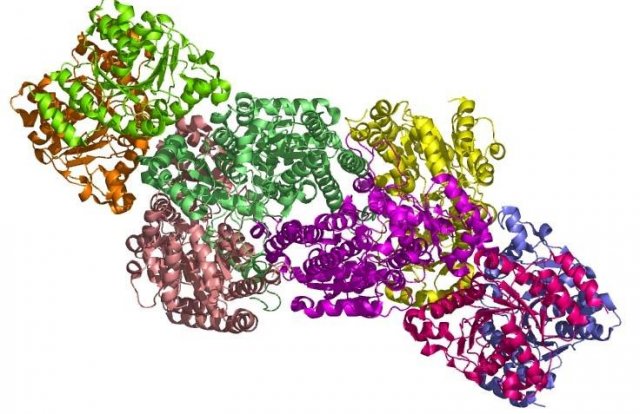Remodeled enzyme converts carbon dioxide into methane
Ars Technica » Scientific Method 2012-11-15

An engineered enzyme is the first single biological catalyst that converts carbon dioxide into a renewable form of energy: methane. Surprisingly, the same enzyme can use carbon dioxide to make an important ingredient in plastics as well.
Recycling carbon dioxide by turning it into fuels like methanol (CH3OH) or methane (CH4) might be one way to slow the CO2 accumulation in our atmosphere. But that's quite a challenge, because CO2 is a pretty inert molecule and doesn't readily participate in chemical reactions. So chemists have developed metal-containing catalysts to assist in the reduction reactions that convert it to methane and other carbon-containing small molecules. Alternatively, bacteria can use CO2 to make methane, but they use a series of proteins to catalyze the transformation.
Lance Seefeldt at Utah State University and his colleagues study a bacterial enzyme called a nitrogenase, which reduces nitrogen gas (N2) to ammonia (NH3) using a cluster of iron and molybdenum atoms buried inside the protein. The reduction of carbon dioxide to methane requires a transfer of eight electrons, just as ammonia production does, so the scientists wondered if an altered version of this enzyme could accept and reduce carbon dioxide.
Read 5 remaining paragraphs | Comments